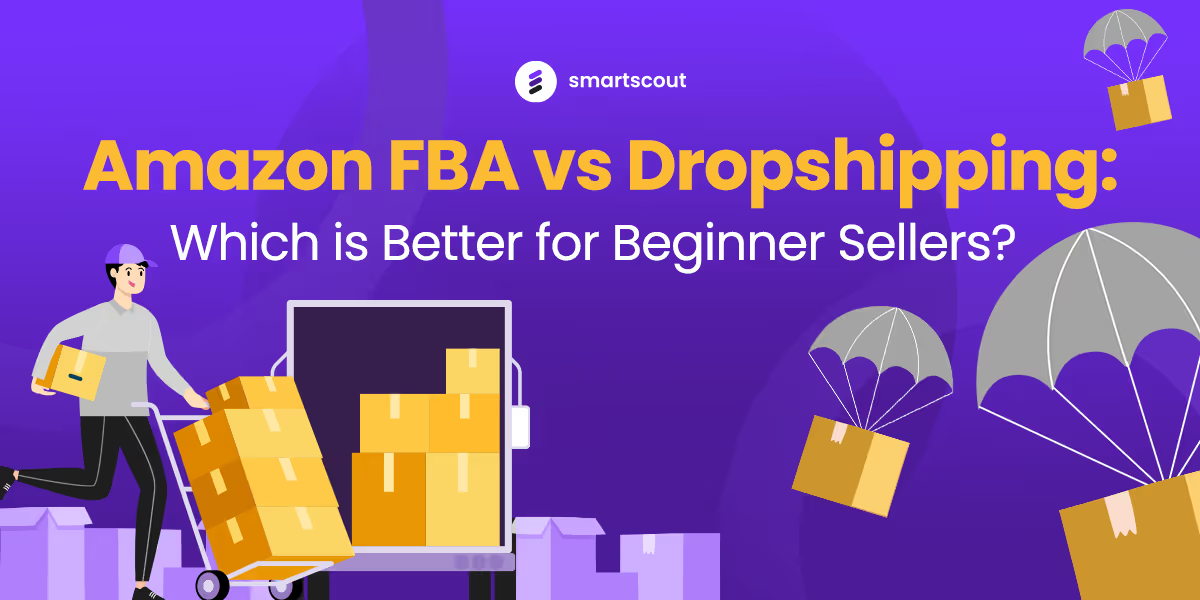Now that you’re convinced that selling on Amazon can be a good business opportunity, it’s time to choose which fulfillment method is best for you.
You’ve heard praises about Amazon FBA, but you’ve also heard about the low-entry cost of Amazon dropshipping. Each has its pros and cons. And each can be the better choice for different people.
The question is, which one aligns your goals? Let’s find out.
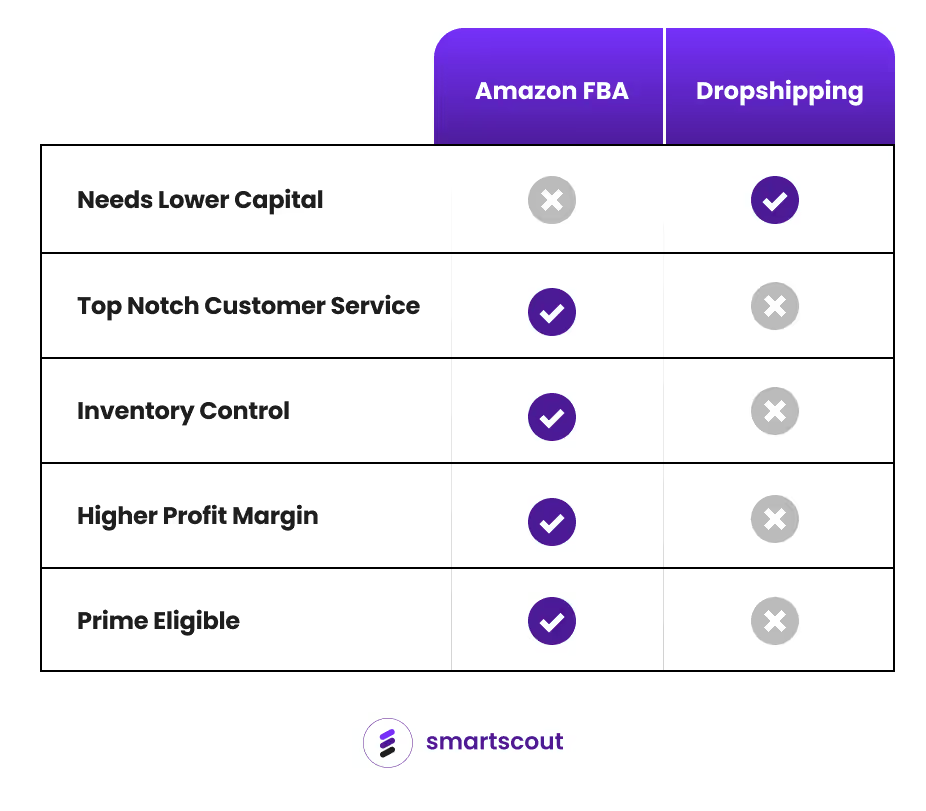
What is Amazon FBA?
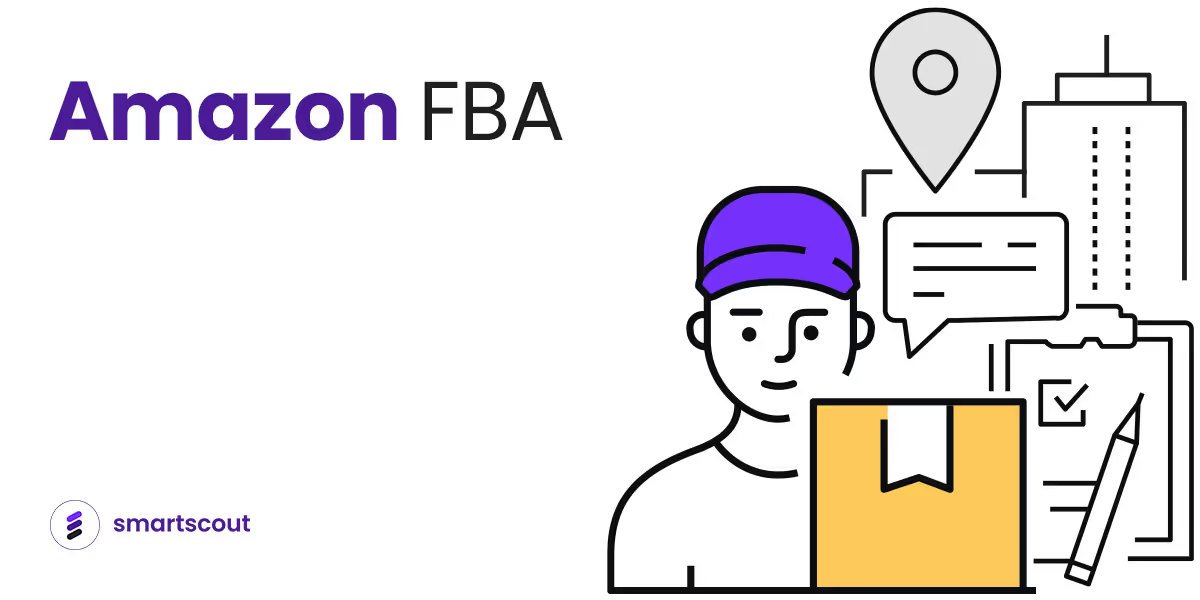
Amazon FBA, short for Fulfillment by Amazon, is a comprehensive service offered by Amazon. Instead of sellers managing storage, order dispatch, returns, and customer inquiries themselves, Amazon takes care of it all.
This not only ensures a streamlined process but also allows you to redirect your focus, whether it's investing time in growing your business or making time for rest and moments with the people you care about the most.
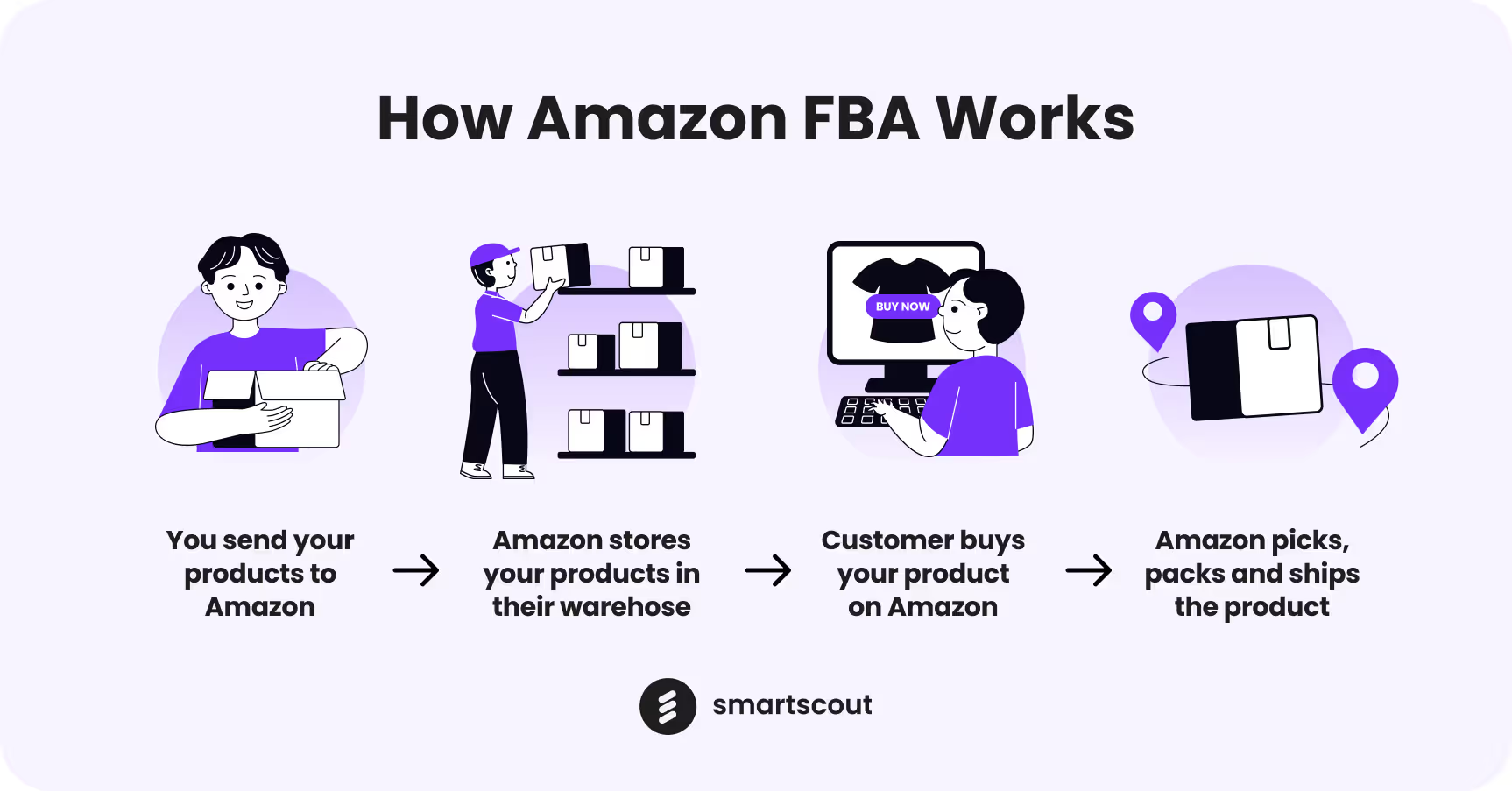
Amazon FBA Pros
- Trust and credibility. Amazon has been a market leader for years, known for its commitment to customer satisfaction. Products fulfilled by Amazon inherit this trust, making customers more confident in their purchases.
- Access to Amazon prime audience. With 167 million Amazon Prime members, offering Prime Eligibility can significantly increase your product's appeal. In fact, Amazon made $35.22 billion in 2022 from prime members.
- Simplified operations with streamlined fulfillment. Imagine not worrying about storage, packaging, or shipping. Amazon's robust system handles it all, saving sellers both time and money.
- Top-notch customer service and hassle-free returns. A happy customer is a returning customer. Amazon's professional customer service and straightforward return process ensure your customers remain satisfied.
- Higher visibility. Did you know FBA products often rank higher in Amazon searches? This visibility can translate to increased sales, with some sellers reporting a [specific percentage] boost.
- Growth without growing pains. From selling ten products a day to a thousand, Amazon's infrastructure is built to handle your growth, no extra effort required on your part.
Amazon FBA Cons
- FBA fees. While FBA offers numerous benefits, it comes at a cost. Sellers typically face a combination of referral fees, variable closing fees, and storage fees. For some, these fees can eat a significant portion of revenue, especially if products remain unsold for long durations.
- Inventory risk. Predicting demand is an art and a science. Overestimate, and you risk incurring long-term storage fees. Underestimate, and you might miss out on potential sales. Striking the right balance is crucial to avoid financial pitfalls.
- Less control over branding. Branding isn't just about a logo; it's about the entire customer experience. With FBA, the Amazon-branded packaging means sellers miss out on offering a unique unboxing experience, which can be a missed opportunity for building brand loyalty.
- Commingling issues. Commingling might sound efficient, but it has its risks. If your product gets mixed up with a lower-quality version from another seller, your brand reputation could take a hit. Ensuring product integrity is paramount for long-term success.
What is Dropshipping?
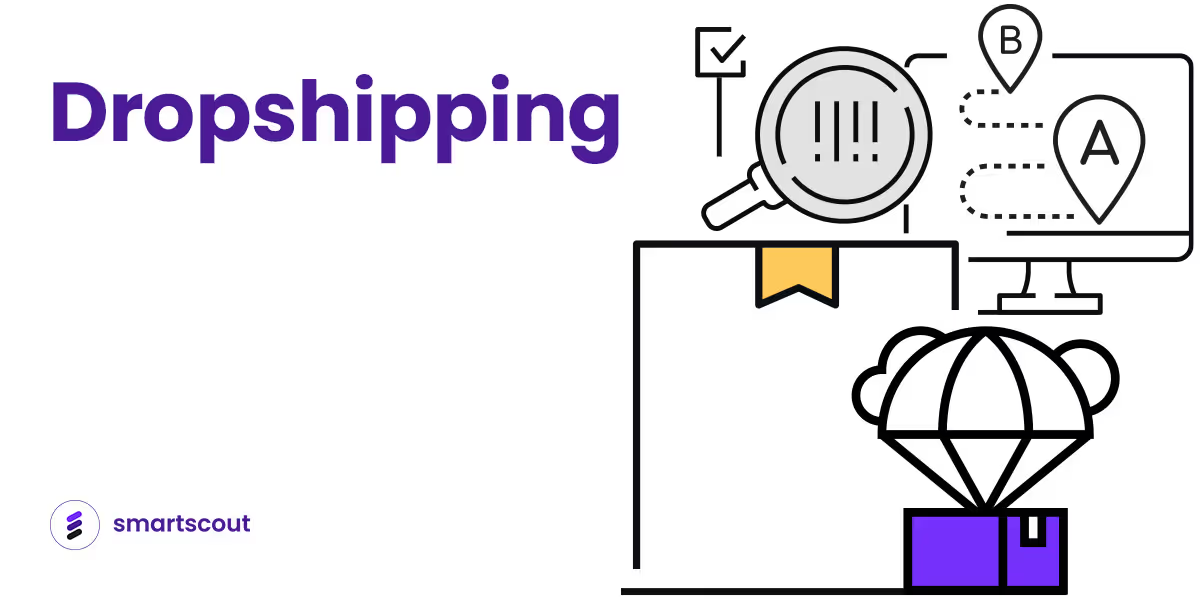
Dropshipping is an e-commerce model where you sell products online without holding any inventory yourself. Instead of buying stock upfront, you list products on your online store, and when a customer makes a purchase, you forward the order details to a third-party supplier or manufacturer.
They then handle the packing and shipping, sending the product directly to the customer. This model allows sellers to start an online business with minimal upfront investment, focusing more on marketing and customer service.
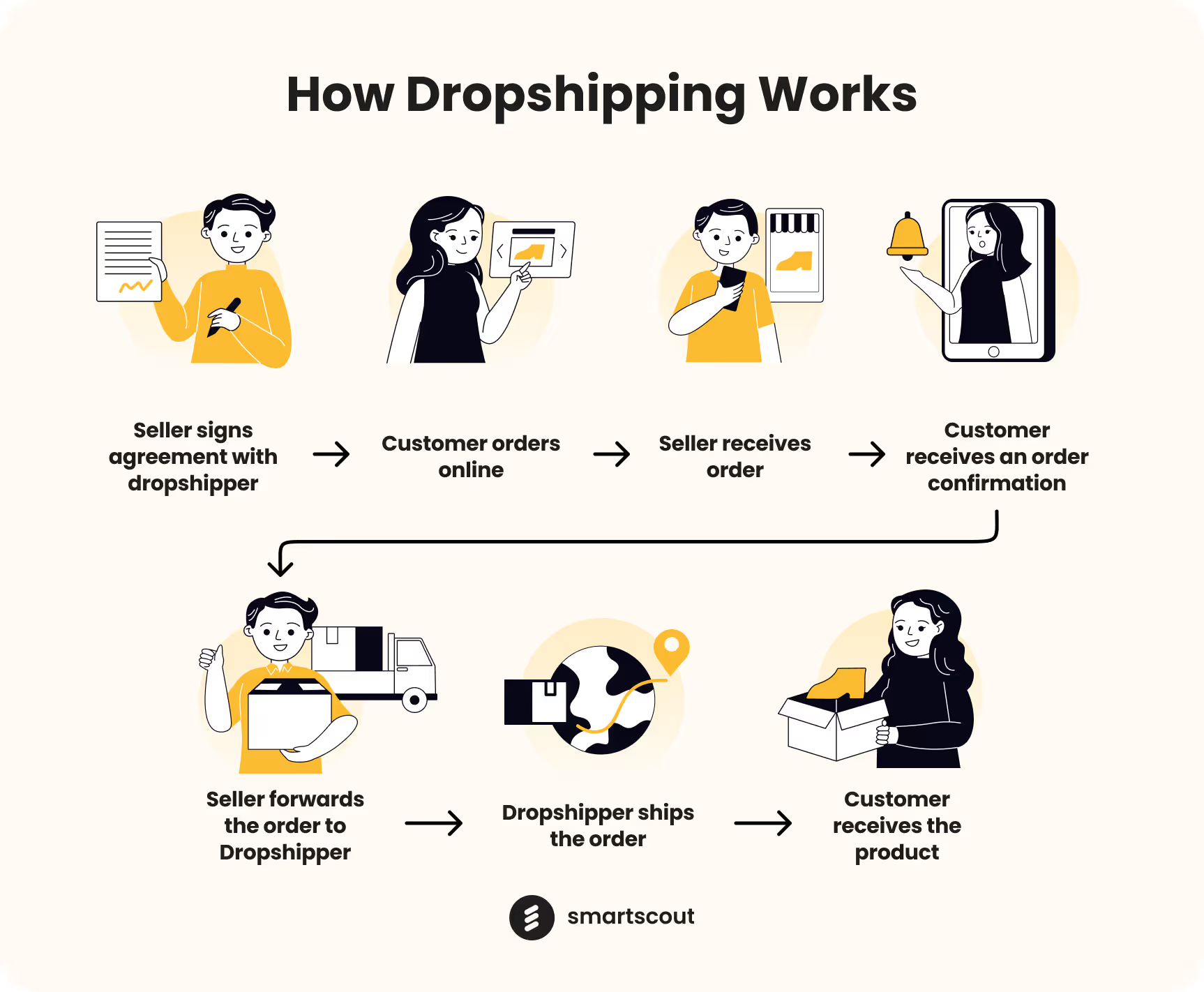
Dropshipping Pros
- Low upfront investment. Traditional retail often grapples with unsold stock, tying up capital and incurring losses. Dropshipping sidesteps this, allowing sellers to list products without heavy initial investments.
- Flexible product offerings. React swiftly to market trends. Whether it's a sudden demand for home workout gear or eco-friendly products, dropshipping lets you adapt your offerings on-the-fly.
- Keep costs low. Without warehouses or a logistics team, overheads are slashed. On average, dropshippers report lower operational costs compared to traditional retailers.
- Kickstart your business with ease. Platforms like Shopify and Oberlo have made setting up a dropshipping store a breeze, even for those new to e-commerce.
- Operate from any Corner of the globe. From a beach in Bali to a cafe in Paris, all you need is an internet connection to run your dropshipping business.
- Bypass FBA fees. While Amazon FBA offers its perks, it comes with a fee structure. Dropshipping eliminates costs like storage and fulfillment fees, boosting your profit margins.
- Craft a unique brand experience. With dropshipping, every package sent out can be a reflection of your brand, from personalized notes to branded packaging.
Dropshipping Cons
- The waiting game. Dropshipping often relies on suppliers from different parts of the world. While this offers a diverse product range, it can lead to extended shipping times. For instance, a product from a supplier in Asia might take 20-30 days to reach a customer in the U.S. In an era where customers are accustomed to two-day shipping from services like Amazon Prime, prolonged waits can lead to dissatisfaction and potential negative reviews.
- Profit challenges. The dropshipping model inherently involves a middleman: the supplier. This means that while you save on not holding inventory, each sale's profit is split. To maintain profitability, sellers often need to mark up prices or achieve high sales volumes. This can sometimes make pricing less competitive.
- Crowded marketplace. Platforms like Shopify and Oberlo have made it easier than ever to start a dropshipping store. This accessibility has led to a surge in dropshipping businesses. A saturated market means sellers need to invest more in marketing and branding to differentiate themselves and attract customers.
- Control issues. When you dropship, the product goes directly from the supplier to the customer. This means you don't personally inspect or handle the items. Issues like incorrect product shipments, damaged goods, or inconsistent product quality can arise, affecting your brand's reputation.
- Supplier dependencies. Your business's success is intertwined with your supplier's reliability. If they run out of stock or face shipping delays, it directly impacts your operations. Regularly running into stock issues or not being able to fulfill orders promptly can erode customer trust.
- Managing multiple suppliers. Many dropshippers source products from multiple suppliers to offer a diverse range. Each supplier might have different shipping rates, lead times, and product quality standards. Juggling these variables can become complex, leading to potential order mix-ups or inventory tracking challenges.
- Customer service hurdles. Even if a shipping delay or product defect is the supplier's fault, customers will reach out to you for solutions. Handling these issues requires excellent customer service skills and can sometimes involve bearing additional costs, like refunds or reshipments.
What Is the Difference Between Amazon FBA and Dropshipping?
The main difference between Amazon FBA and dropshipping revolves around inventory ownership and fulfillment processes.
With Amazon FBA, sellers invest in their merchandise, sending it in bulk to Amazon's warehouses. Here, Amazon takes the reins, handling storage, order fulfillment, and even returns.
On the other hand, dropshipping operates without the seller owning any upfront inventory. In this model, sellers act as a bridge between the customer and third-party suppliers or wholesalers. When a sale occurs, it's these suppliers who manage fulfillment, shipping the product directly to the end customer.
Different Fulfillment Methods Serve Different Type of Sellers
If you're looking to start with minimal financial risk, value flexibility, and want to experiment with a range of products, Dropshipping might be your path. It allows you to set up shop without heavy upfront costs, but remember, you'll be relying on third-party suppliers for product quality and shipping times.
If you have some capital to invest and are seeking a more hands-off approach to fulfillment, Amazon FBA could be the way forward. With FBA, you benefit from Amazon's vast customer base and efficient fulfillment process. The potential to earn the Prime badge can also be a significant advantage in attracting customers.
In the end, consider your long-term goals, the amount of control you want over the process, and how involved you wish to be in daily operations. Whichever route you choose, ensure you're informed, prepared, and excited about the journey ahead.


